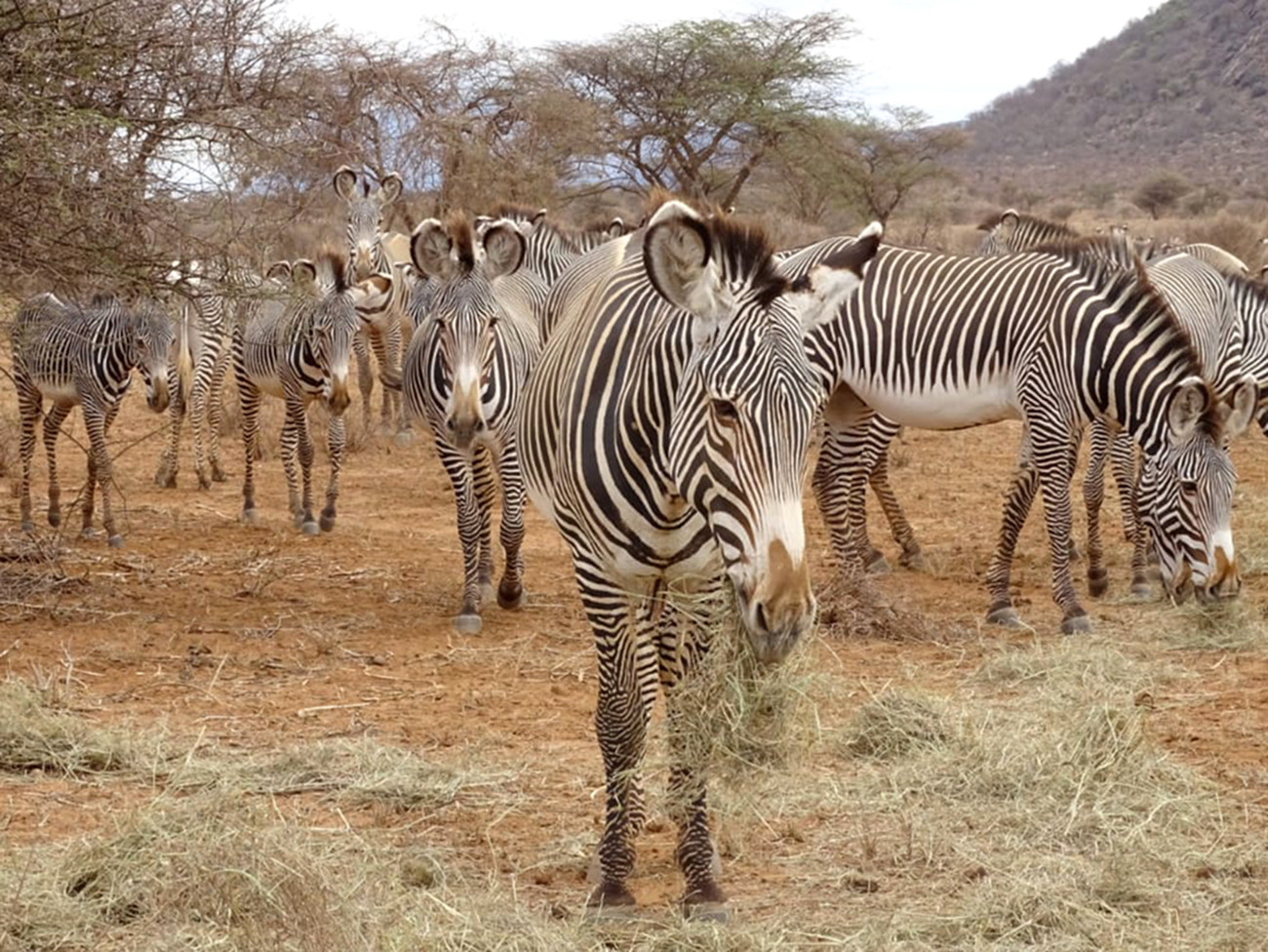devastating drought in Kenya threatens survival of endangered Grevy’s zebras
devastating drought in Kenya threatens survival of endangered Grevy’s zebras

Record droughts in northern Kenya are threatening the survival of one of Africa’s most endangered large mammals—the Grevy’s zebra.
Over 90% of the 3,000 remaining Grevy’s zebras live in the arid landscapes of northern Kenya. Unfortunately, northern Kenya is currently experiencing its fourth consecutive failed rainy season, causing a climatic event not seen in 40 years.
With the drought expected to continue over the coming months, the work of Grevy’s Zebra Trust (GZT), the only organisation in the world focused entirely on conserving the Grevy’s zebra in Kenya, is more important than ever.
people and animals
The future of Grevy’s zebras in northern Kenya is intrinsically linked with the resilience of the pastoral communities they share the land with. Both are threatened as their land gets degraded and fragmented, their access to water is restricted, and looming insecurity and disease. We join GZT in striving toward solutions that might better the future for people and endangered zebras.
Recognising that the survival of Grevy’s zebra depends on its ability to co-exist with people living in northern Kenya, GZT focuses on helping communities. The organization has the partnerships, knowledge and traditional systems in place to address environmental challenges, and their role is to support resilience practices and help communities adapt to modern realities so that they can protect their resources for pastoral communities and wildlife to thrive.
responding to an unprecedented drought
Limited grazing land and water means Grevy’s zebras are increasingly being displaced by livestock. In partnership with Kenya Wildlife Service, GZT employees are regularly evaluating the body condition of Grevy’s zebra through their extensive network of community monitors across the landscape. They’re also keeping tabs on the condition and availability of critical resources. When the teams observe declining forage and water, they conduct more detailed assessments of Grevy’s zebra health and provide supplementary feed if needed. That extra food helps the zebras withstand the effects of drought and disease. Maintaining access to water for Grevy’s zebra is also a critical intervention, especially for nursing mothers.
supplemental feeding
GZT has extensive experience with feeding Grevy’s zebra, having provided supplementary feeding as needed for over a decade. Based on GZT’s deep understanding of the distribution of Grevy’s zebras, GZT is establishing feeding sites across northern Kenya, including in national parks as well as community conservancies.
In protected areas, where there are usually large numbers of Grevy’s zebra, feeding is done during the day and at multiple sites. The teams work from dawn until dusk, and the work is physically challenging due to the heat. Considering that all the people involved in this work are pastoralists who are suffering significant livestock losses as a result of this extended drought, their commitment to helping Grevy’s zebra survive is courageous and inspiring.
In community areas where livestock are also present, feeding is done at night when livestock are asleep along corridors that Grevy’s zebra use to access water. Cameras enable the team to monitor when and how many animals are accessing the hay. Leftover hay is left for livestock to feed on as they pass through the site. GZT undertakes community outreach to ensure local support for these efforts.
At all feeding sites, care is taken to ensure that placement of hay is in fresh locations to avoid contamination of the hay with dung. The hay is also laid out in a long line so that zebras don’t have to compete for food.
access to water
During drought conditions, access to clean water for domestic use becomes a key challenge as nearby water sources dry up. It is vital to increase the availability of water for livestock and Grevy’s zebra in remote areas where water is scarce. For Grevy’s zebra and other wildlife, GZT manages access to water in two ways. The organisation employs community water monitors to dig shallow wells for wildlife in dry riverbeds and set cameras to monitor their use. It also provides fuel to communities so they can pump water into their livestock troughs for their animals to drink during the day, and then they leave their troughs full of water at night for wildlife.
emergency funding and relief
To assist with the crisis at hand, IFAW has just committed emergency funding toward GZT’s drought response. GZT already has 4,000 bales of hay secured and they anticipate having to feed zebras in more areas as the drought intensifies. The highest costs are associated with transporting the feed and the fuel needed for feeding and surveys, as fuel prices have almost doubled in Kenya this year. Ensuring the health and well-being of the staff and volunteers as they undertake this challenging work is also a key priority.
Together with GZT, our commitment seeks to better the future for both animals and people in a time of climate-related disasters around the world.
Related content
Our work can’t get done without you. Please give what you can to help animals thrive.